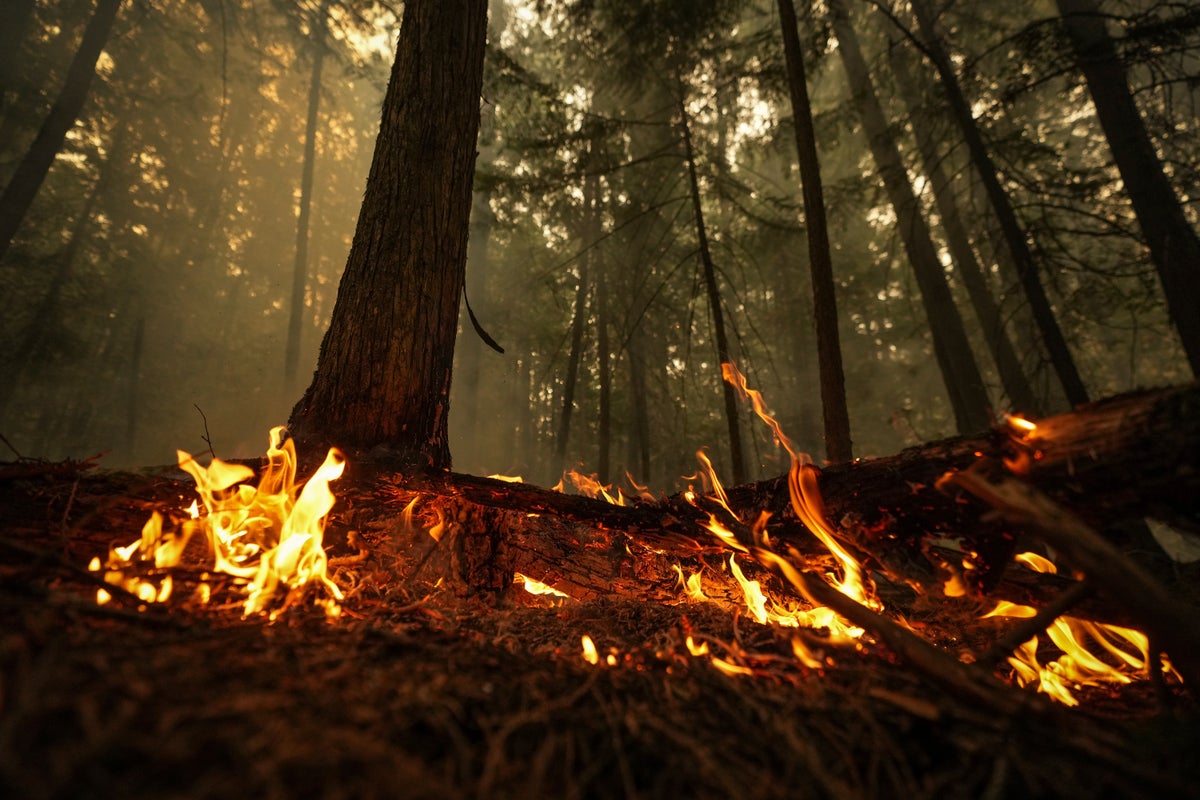
Canadian firefighters made some progress battling blazes in a British Columbia region known for picturesque resort towns, but hundreds more raging across the province have pushed thousands from their homes and flames also threatened a provincial capital hundreds of kilometers (miles) to the north.
There’s “finally a bit of a glimmer of hope,” West Kelowna Fire Chief Jason Broland told a news conference of the progress being made Sunday in the Lake Okanagan region, which is known as a summer destination for families.
“The weather has allowed us to make progress,” he said, adding that crews were able to conduct more traditional firefighting techniques such as putting out hot spots.
More than 2,000 kilometers (1,200 miles) away, firefighters fought flames bearing down on Yellowknife, the capital of the Northwest Territories. The fire remained about 15 kilometers (nine miles) from the city, which was left virtually empty after nearly all of its 20,000 residents fled for safety.
“Even as things dried out and fire behavior picked up, we were able to do some good suppression work form the air and limit the progression,” fire information officer Mike Westwick said at a media briefing Sunday night.
Canada has seen a record number of wildfires this year that have also caused choking smoke in parts of the U.S. All told, there have been more than 5,700 fires, which have burned more than 137,000 square kilometers (53,000 square miles) from one end of Canada to the other, according to the Canadian Interagency Forest Fire Centre.
Hundreds of fires continued to rage across British Columbia and 35,000 people were under evacuation orders Sunday.
“It is still very much dynamic,” said Jerrad Schroeder, a British Columbia Wildfire Service chief. “There’s still portions of this fire that we just have not prioritized.”
Fire chief Broland also conceded that “some may be coming back to nothing” when evacuees are allowed to return.
“Some of you have lost your homes. There’s no question about that,” he said. “There are lots of backyards where the fire has come right to your patio furniture. And it’s been stopped there because of the work of the 500 people that are on the ground fighting. ”
Canadian Prime Minister Justin Trudeau announced the approval of British Columbia’s request for federal assistance. “We’ll continue to be here with whatever support is needed,” he said on X, formerly known as Twitter.
In a Facebook post, Yellowknife officials said they were working to establish wildfire defense lines around the city, creating fire breaks and using water sprinklers, cannons and aircraft dropping fire retardant. A protective line of 25 kilometers (15.5 miles) has been established.
“We are not out of the woods yet as many factors can change the status of a fire quickly,” the post said.
Shane Thompson, the province's environment minister said the fire was “unlikely to reach the outskirts of the community today or tomorrow.”
Still, in Hay River, evacuees could be looking at weeks before they can return home, Mayor Kandis Jameson said in a Sunday morning statement to the community’s 3,800 residents. Warm, dry weather and steady winds are forecast for the upcoming week, she said.
Among those who fled as flames threatened their homes in British Columbia was Todd Ramsay. He recalled sitting on his deck in Kelowna’s North Clifton area watching the fire rage on the other side of Lake Okanagan, about 2.5 kilometers (1.5 miles) away. He didn’t think it would be possible for the flames to jump the lake, but they did.
“Sure enough, it started raining pine cones and tree bark,” he said. A fire quickly started behind his house and there were “huge plumes of smoke just carrying embers across the lake.” Ramsay said he turned on a water sprinkler and he and his family packed up to flee Thursday night as trees were burning, wondering if they’d see their home again.
By Saturday, Ramsay, his wife, two children, two cats and a dog had driven to North Vancouver to stay with his sister. Ramsay heard his house had not burned but didn’t know for sure.
“There’s definitely some anxiety around it,” he said. “I’m an artist. I have a lot of my paintings there. The more important thing obviously is all of us are safe. But we’ve worked hard our whole lives to have this home.”







